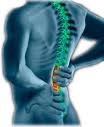Clinical Decision Support and Acute Low Back Pain: Evidence-Based Order Sets
Scott E. Forseen, MDa, Amanda S. Corey, MDb
a Department of Radiology, Neuroradiology Section, Georgia Health Sciences University, Augusta, Georgia
b Department of Radiology and Imaging Sciences, Division of Neuroradiology, Emory University Hospital, Atlanta, Georgia
Low back pain is one of the most common reasons for visits to physicians in the ambulatory care setting. Estimated medical expenditures related to low back pain have increased disproportionately relative to the more modest increase in the prevalence of self-reported low back pain in the past decade. The increase in spine care expenditures has not been associated with improved patient outcomes. Evidence-based order templates presented in this article are designed to assist practitioners through the process of managing patients with acute low back pain. A logical method of choosing, developing, and implementing clinical decision support interventions is presented that is based on the best available scientific evidence. These templates may be reasonably expected to improve patient care, decrease inappropriate imaging utilization, reduce the inappropriate use of steroids and narcotics, and potentially decrease the number of inappropriate invasive procedures.
comment
Guidelines Discourage Routine Imaging for Low Back Pain
Routine diagnostic imaging for low back pain doesn’t improve outcomes and only increases complications and costs, warns a clinical guideline from the American College of Physicians in the Annals of Internal Medicine.
The authors revisit the guidelines issued by the ACP and the American Pain Society in 2007 and add evidence from a meta-analysis of six clinical trials. Here are their principal recommendations:
- Use an initial trial of therapy rather than immediate imaging.
- However, imaging is warranted when the patient has major risk factors for cancer, or shows severe or progressive neurologic deficits.
- Risk factors or signs of vertebral infection or the cauda equina syndrome, although rare, also warrant more immediate imaging.
The authors state that routine imaging “cannot be cost-effective.” They conclude that “efforts to reduce use of imaging should be multifocal and address clinician behaviors, patient expectations, and financial incentives.”



Giorgio, una sola parola!! Utilissimo.
Complimenti.